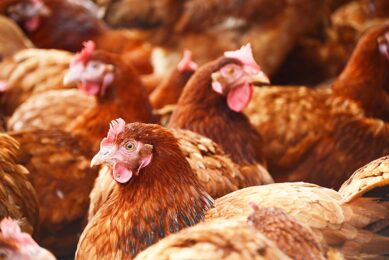3rd edition of Poultry World 2020 is now online

In this edition we consider the marketing of eggs from all corners of the world and take a look at a breakthrough in technology that will result in no male chick culls. Plant extracts and broccoli are finding their place in the poultry feed industry. We take a trip to Brazil to visit Pluma and Globoaves, which both provide their eggs to the Butantan Institute, the only institute with the technology to produce flu vaccines in Latin America.
View Poultry World Nr.3 digital magazine
Marketing eggs worldwide
Eggs have a good story to tell when it comes to nutritional profile, and marketing eggs offers a direct way of improving profit margins for farms. A Nuffield scholar in the UK, Jamie McIntosh, looked at different markets around the world and how they drive egg consumption.
Novel techniques make culling male layers obsolete
The killing of male layer chicks immediately after hatching has become an increasingly heated debate. Seleggt has made a breakthrough in technology. Using a prototype of their concept and with German retailer Rewe on board, they were the first to have commercially available consumption eggs on supermarket shelves, produced with no male layers hatched.

Plant extracts to promote healthy growth
Antibiotic growth promoters were introduced in livestock farming about 50 years ago, but now they are being phased out. Phytomolecules as an alternative to AGPs offer a viable and promising economic substitute as plant extracts have shown themselves to be beneficial in helping animals to overcome the presence of pathogens more effectively.
Eggs essential in human health protection
The basis for human vaccine manufacturing is a fertilised egg. Vaccine egg production is the speciality of companies like Pluma and Globoaves in Brazil. They both deliver their eggs to the Butantan Institute, which is the only institute with the technology to produce flu vaccines in Latin America. Poultry World went to visit.

The greatest ally in egg production
Egg producers are coming under pressure. They are looking for ways to help their birds to continue to lay more, ideally from less. Improving the gut health of birds in lay will enable them to absorb a greater proportion of their feed.

Broccoli for broilers
Broccoli can improve growth performance and meat quality while curbing the effects of harmful pathogens in broilers. As we seek alternatives to antibiotics, could broccoli be an option?

View Poultry World Nr.3 digital magazine
Lower viral pressure thanks to VIR Check
Broiler farmers devote a lot of time to cleaning and disinfecting their poultry houses after delivering a flock. A new test, VIR Check, enables farmers to measure the results of cleaning and disinfection.

Controlling Sudden Death Syndrome via feed strategies
Sudden Death Syndrome occurs in broiler chickens of all ages and is a major source of profit loss. Smart feeding strategies can limit its incidence.

World Mycotoxin Report
FUM and DON mycotoxins remains high according to Biomin’s 2019 World Mycotoxin Survey, which gathered over 20,000 samples that were tested from 86 countries, giving a global overview of current mycotoxin prevalence.

To access the digital magazine section, where you will find the 3rd edition of Poultry World 2020 as well as other magazines from specialists in the agriculture industry, simply register for free.
Join 31,000+ subscribers
Subscribe to our newsletter to stay updated about all the need-to-know content in the poultry sector, three times a week. Beheer
Beheer








 WP Admin
WP Admin  Bewerk bericht
Bewerk bericht